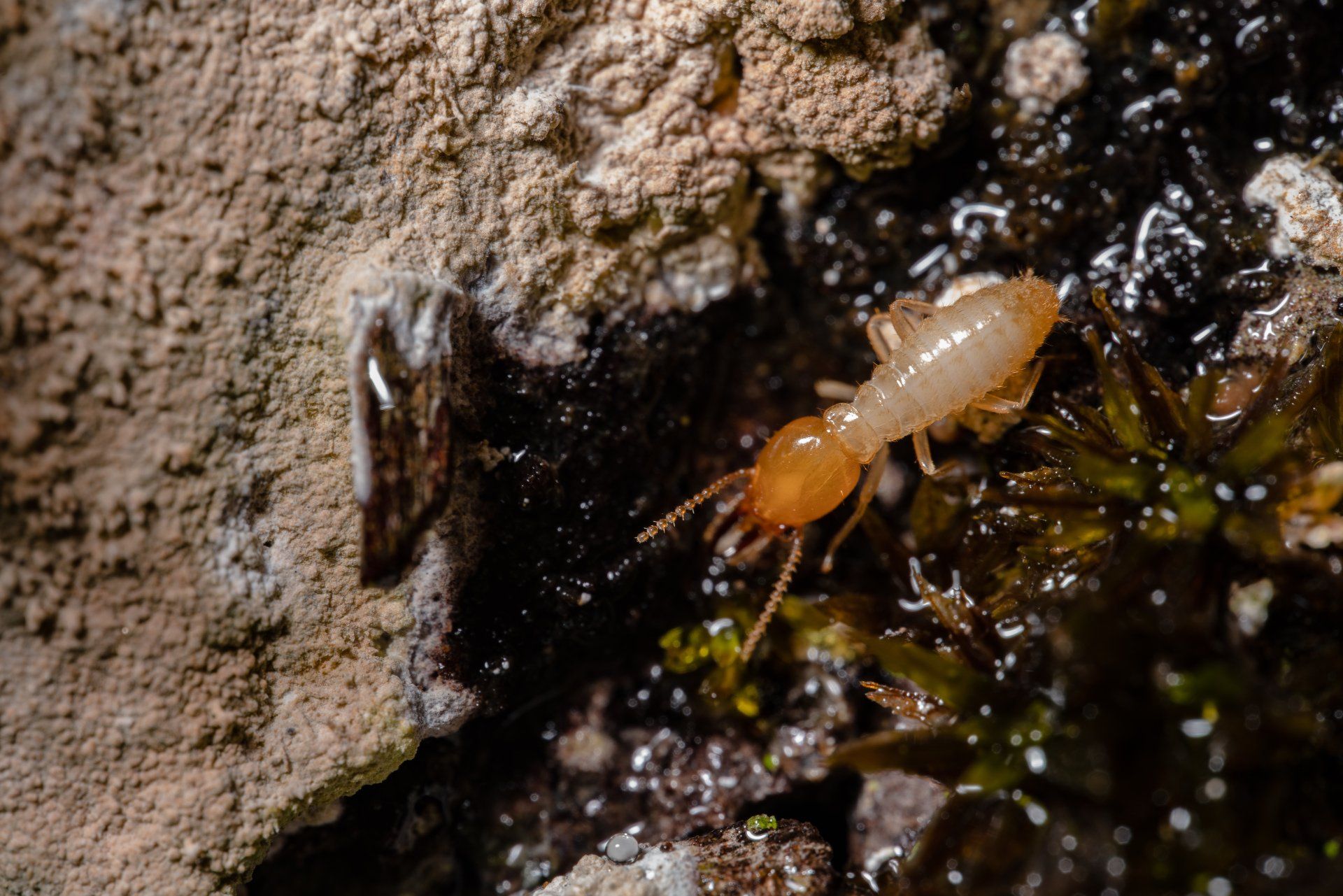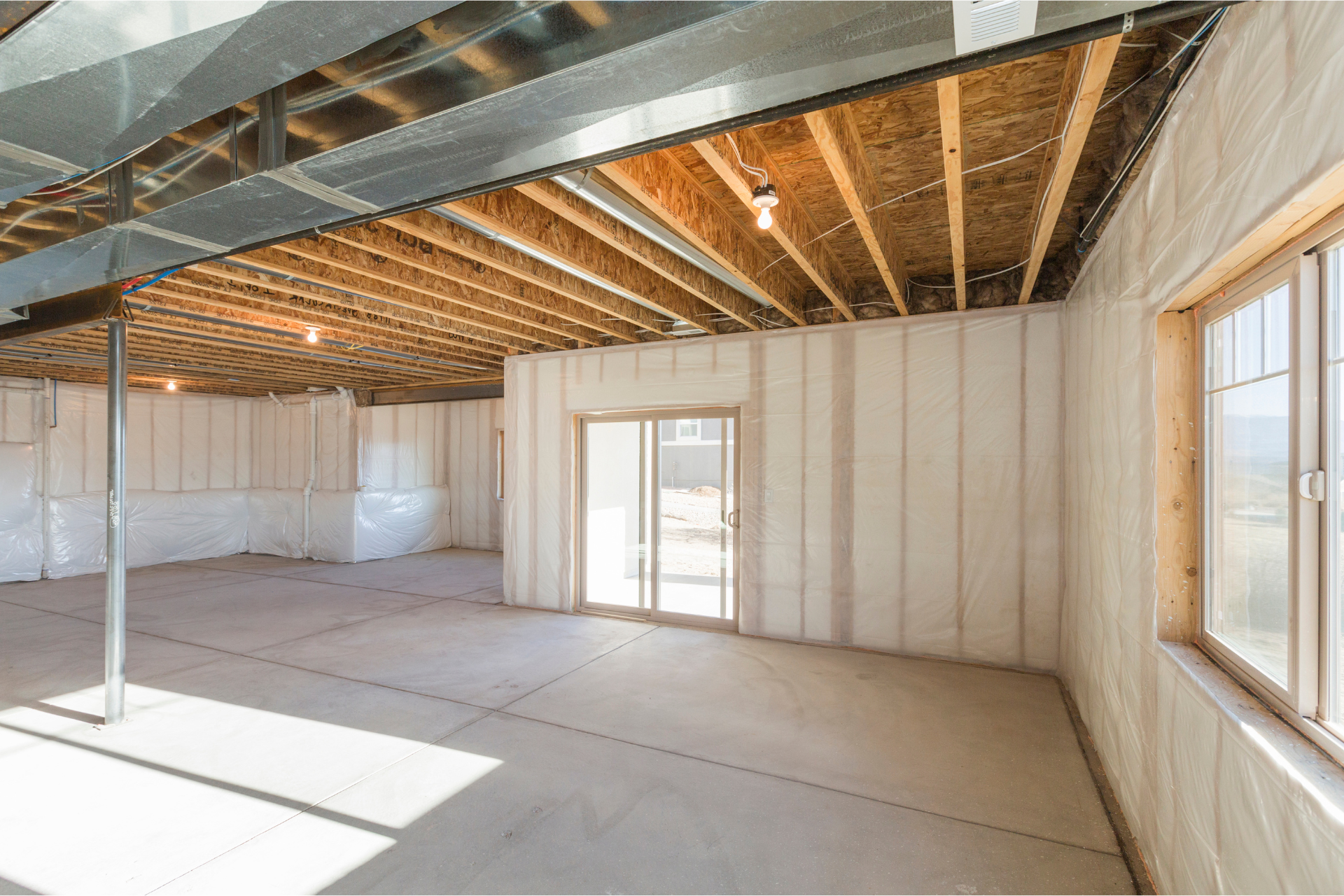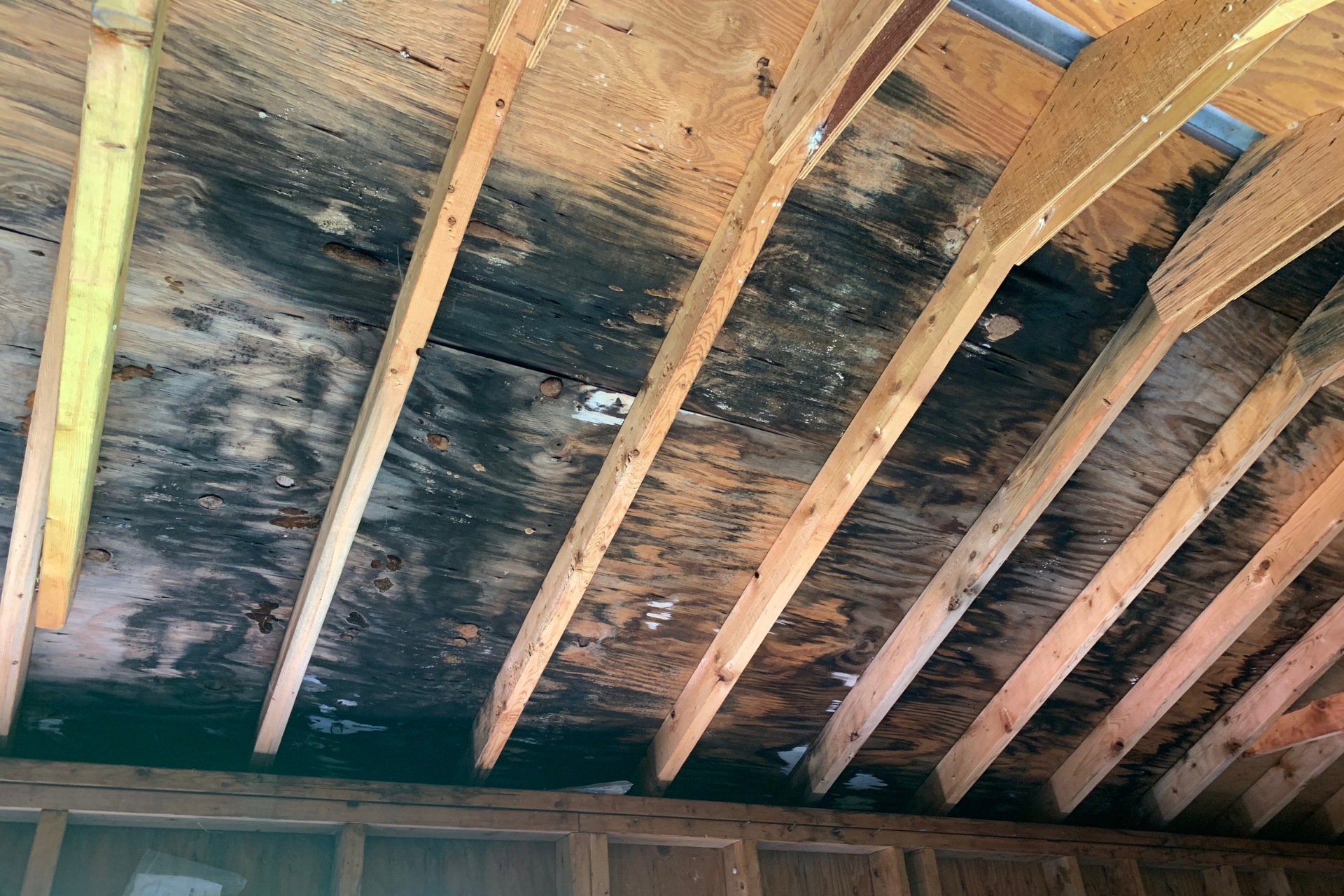DrySeal Home, Crawlspace, &
Basement Solutions
Our team delivers outstanding service and support at competitive prices. All of our work is guaranteed and complies with the highest industry standards.
Satisfaction Guaranteed
We treat every project with the respect it deserves, and don't stop until you are satisfied.
-
All our technicians are trained and certified
DrySeal Home , Crawlspace, and Basement Solutions is your one-stop-shop for fixing all your home and basement waterproofing needs. We have a wide range of products and services to suit every budget, and our technicians are all certified and highly trained. So whether you're dealing with a leaky roof or a flooded basement, we can help! Call us today for a free consultation.
-
Satisfaction guaranteed on every project
If you're like most homeowners, you take great pride in your home. And you know that a dry and healthy basement is key to preserving its value and keeping it comfortable. That's why we offer DrySeal Home and Basement Solutions—a comprehensive system of waterproofing and insulation services that will keep your home healthy and dry for years to come. We're so confident in our work that we offer a satisfaction guarantee on every project. So call us today, and let us help you protect your most significant investment!
-
Family Owned and 30+ years experience
DrySeal Home, Crawlspace, and Basement Solutions is a family-owned and operated business that provides quality waterproofing services with over 30 years of combined experience. We use the latest technologies and techniques to offer our customers the best possible service. Whether you're dealing with a water leak in your basement or wanting to prevent one from happening, we can help!
-
Residential and commercial services
DrySeal Home, Crawlspace, and Basement Solutions provides top-quality residential and commercial services to keep your property in excellent condition. Our team is comprised of experienced professionals who are dedicated to providing the best possible service. We use the latest techniques and equipment to ensure a quick, efficient, and lasting solution. Contact us today for a free consultation!
Get an Inspection Today!
We will get back to you as soon as possible.
Please try again later.
Check Out Our Popular Services
Crawl Space Encapsulation
Encapsulation involves installing moisture barriers in the floor, sealed foundation vents prevent water from leaking in.
Foundation Crack Repair
The foundation of your home is responsible for keeping your home together. So, if it is experiencing any issues, it can lead to dangerous problems that are expensive to fix.
Basement Waterproofing
Keeping your basement dry is vital to your home. Not only does it protect the structure of your house, but it also keeps the air quality safe and at its best.
Mold Remediation
Any time you are dealing with mold, you need a certified expert. Anything less simply is not safe.
Gutter Cleaning
Proper Gutter Cleaning & maintenance saves you money and prevents water damage to your home.
Gutter Guard Installation
Tired of having to remove debris from those overflowing gutters? With our Xtreme Gutter guard systems, you will not have to!
Top 6 Reason to Encapsulate Your Crawlspace
- Your family deserves healthier air. Did you know that up to 50% of the air you breathe comes from your crawlspace? ...
- Prevent costly structural repairs. ...
- Lower Energy Bills. ...
- Added storage space. ...
- Help your HVAC systems last longer.
- Increased home value.
10 Benefits of Encapsulating Your Crawl Space
- You Can Save on Heating and Cooling Bills. ...
- It Can Reduce Your Chances of Getting Mold. ...
- It Keeps Out Insects. ...
- It Can Increase the Value of Your Home. ...
- It Improves Your Indoor Air Quality. ...
- It Makes Your House More Comfortable. ...
- It Makes Sure Your Floors Are Meant to Last.
-
We Are Your Local Waterproofing and Gutter Cleaning Specialists!
If you require home waterproofing or gutter cleaning services, look no further than our team at DrySeal Home, Crawlspace, and Basement Solutions. We specialize in waterproofing for both residential and commercial buildings. Our waterproofing systems are made from the highest quality materials designed to withstand harsh weather conditions. We also offer a wide range of solutions, so we can help you find the perfect system for your home or business.
In addition to gutter cleaning and gutter guards, we also offer a variety of waterproofing solutions, including our DrySeal basement system (encapsulation). This system is designed to keep your basement or crawlspace dry and free from moisture damage. We highly recommend installing a gutter guard system in conjunction with our DrySeal Basement system, as this will help prevent any leaking or pooling water. This is especially important for low-lying areas of your home, where water can accumulate quickly during periods of heavy rain.
We offer top-of-the-line gutter guards that Lynchburg , VA residents can trust to be effective for residential and commercial properties alike. Maintaining your gutters doesn't have to be a hassle, as our team at DrySeal Home and Basement Solutions specializes in keeping your gutters free of debris and operating correctly! We proudly serve homeowners and business owners, providing the best gutter cleaning solutions to Lynchburg VA, Richmond VA, and the surrounding areas. If you are interested in learning more about our gutter cleaning and gutter guard services, call us today at (804) 324-3398.
-
Our Crawl Space Encapsulation System Prevents Future Damage From Water Leaks
Crawl space encapsulation is a system used under a house to keep crawl spaces or basements from becoming damp, cold, and sometimes musty. Crawlspaces may have dirt floors and are often enclosed by the walls of a house with an open top. In most cases, they can be accessed through access doors on the basement floor or from inside the house itself. A properly encapsulated crawl space keeps moisture out, so it does not cause damage to your home. Additionally, this results in significant energy savings because you won't have to use as much energy to warm up moist air before releasing it into the living area. It also improves indoor air quality by keeping moisture-producing mold, mildew, dust mites, and other contaminants out of your living environment.
The encapsulation process completely seals off the crawl space from the outside air. This is done by installing a vapor barrier on all the crawl space walls and floors and then sealing all cracks and joints. The vapor barrier is made of 8, 12 and 20 mil polyethylene plastic that becomes a permanent part of your crawlspace or basement structure. The seams are sealed with tapes or caulking. A layer of insulation is then installed over the vapor barrier to keep the crawl space warm in winter and cool in summer.
Encapsulating your crawlspace has many benefits, including:
- Keeping crawl space moisture out, which prevents damage to your home's structure and finishes
- Stopping crawl space drafts, which makes your home more comfortable and can save on energy costs
- Blocking pests and insects from entering your home
- Preventing the growth of mold, mildew, and other allergens in your living environment
- Improving the air quality in your home.
If you have a crawlspace, it is essential to have it encapsulated to protect your home from the damage that moisture can cause. Call today and talk to a professional at DrySeal Home, Crawlspace, and Basement Solutions about having your crawlspace encapsulated for the best possible protection for your home and family.
-
Crawl Space Insulation That Lasts
If you are like most homeowners, you probably are not thrilled with your crawl space environment. Crawl spaces are often moldy, foul-smelling, and wet areas that many people would rather avoid altogether.
However, at DrySeal Home, Crawlspace, and Basement Systems, we believe that every crawl space should be clean, dry, and energy-efficient. That's why we offer the highest quality insulation services to our clients.
Insulation is one of the best ways to improve your crawl space environment. By installing insulation in your crawl space, you can keep it warm in the winter and cool in the summer. This will help keep the humidity levels down and stop the growth of mold and mildew.
In addition to improving your crawl space environment, crawl space insulation can also help to reduce your energy costs. By adding insulation, you'll be able to insulate your home from the cold and heat, resulting in a more efficient heating and cooling system and reduced electric bills.
When installing insulation in a crawl space, we add our DrySeal vapor barrier. This ideal moisture and air barrier will keep out contaminants like mold and mildew while allowing water to evaporate and air to circulate through the structure. It will also keep dirt and debris away from your crawl space floor, allowing your home to have a more efficient and clean space for storage.
For more information on crawl space or basement insulation, contact us today at (804) 324-3398.
-
Basement Waterproofing Experts That Get the Job Done Right!
Most people are aware that their houses are built so that water will flow away from them when it rains or snow melts off of nearby structures. Supposedly, this means that any water entering a house will be carried out through the sewer system and vented safely into the environment. However, if it has rained recently, much of this "rainfall" that enters a home comes up through the basement floor itself. Water enters the ground around a foundation where small cracks allow liquid through.
The water that seeps in can often create several problems. Not only will the area always have a damp and musty smell, but it can lead to the growth of mold and mildew. In extreme cases, basement flooding can damage personal possessions or ruin furniture.
The good news is that Dryseal's waterproofing system will help take care of these issues once and for all. Various methods can be used, but most experts agree that crawl space encapsulation is one of the best options. This process essentially seals off the crawl space from the rest of the home and creates a watertight barrier.
If the basement has been flooded recently, we can help fix the cause, so your house stays dry during heavy rain. First, we will assess your basement or crawl space to determine preliminary defects such as foundation cracks or structural damage that allows water in. Additionally, it is crucial to determine if your homes gutters are functioning properly, so water is carried away rather than pooling around your foundation. We offer gutter guards to keep leaves and debris from clogging your gutters causing them to overflow.
If left untreated, flooded basements can quickly turn into a much bigger problem that spreads throughout a home. Don't let this happen to you; contact us today to schedule an appointment with one of our professionals for basement waterproofing in your area. (804) 324-3398
-
DrySeal Home, Crawlspace, and Basement Solutions - Mold Remediation Services
Some of the most common questions we get when people find mold growth in their homes is, Where did it come from? How do I fix it? Do I need to tear down walls and ceilings to remove all the mold?
At DrySeal, we specialize in moisture inspection and mold remediation that Charlottesville, VA residents can trust. Our team has the knowledge and experience to handle any job, big or small. We will work with you to identify the source of the mold and remove it safely and effectively.
Mold can cause problems not only for the structure of your home but also for the people living there. It is essential to make sure you remove mold safely and entirely, so no traceable mold spores are found in the air.
We follow all OSHA guidelines by using proper PPE and VADAC approved materials. We always use materials according to the label to ensure maximum effectiveness and safety for the home and our technicians.
It is important to remember that not all situations are the same, and while actions taken might differ per the specific moisture issues for each home, our team knows what it takes to get the job done.
Mold removal is the exact process of removing dangerous mold from your home, and it can be a challenging task. If you have discovered mold in your home, it is best to call in a professional to assess the situation and help you develop a plan and address any concerns you might have about mold.
Our DrySeal Home, Crawlspace, and Basement Solutions team specializes in quality workmanship and customer service for all our projects. Our goal is to bring peace of mind into your home through our services. We are committed to being your number one choice for crawl space sealing, mold inspection, foundation repair, concrete restoration, sump pump installation, and more!
If you are concerned about mold in your home, please call us today for a free consultation on our mold remediation Richmond VA residents have come to trust. We are happy to answer any questions you may have and help you get on the road to remediation.
-
Foundation Crack Repair Done Right
Foundation cracks are more common than you may think. They can be found around weak points like corners, window frames, and doorways, as well as your foundation exterior or plumbing system for a home- it is essential to have them fixed quickly if this has happened so that everything doesn't fall apart!
The foundation of your home exerts pressure when it becomes saturated with moisture. When there isn't enough water, the soil around our foundations shrinks and creates a gap that allows us to shift or even crack in some cases!
When it comes to foundation cracks, time is of the essence. The sooner you detect them in your home's structure and have a professional repair the damaged area with new material before more damage occurs, the more you will save as the problem will only continue to become worse over time.
A few signs that your foundation may be cracking:
- Hairline cracks in your walls, around windows and doors
- A narrow crack on the outside of your foundation concrete walls
- Difficulty opening windows and doors
- In brick homes, the mortar between bricks begins to crack or deteriorate.
- Your floor is uneven
- Water in basement after rain
If you are unsure whether your foundation needs to be repaired, it is best to consult a professional foundation repair specialist. We will assess the damage and recommend the best course of action.
A few different methods can be used for repairing a foundation crack. The most common forms are sealing the cracks with a waterproof sealant, installing carbon fiber straps or reinforcing strips, or using new supporting jacks to level the foundation.
The type of foundation repair needed will depend on the severity of the damage and the condition of the foundation. If the foundation wall is severely cracked or bowed, more extensive repairs may be necessary to ensure its structural integrity.
If you have foundation walls that are badly cracked or bowed, we can provide braces, carbon fiber straps, wall anchors, or tiebacks to help stabilize them. We also offer crawl space and basement waterproofing services to help protect your home from future water damage or structural problems.
For more information on foundation crack repairs, don't hesitate to get in touch with DrySeal Home, Crawlspace, and Basement Systems. We would be happy to answer any of your questions.


Get an Inspection Today!
Contact Us
We will get back to you as soon as possible
Please try again later
Why People Believe In Us
“I wanted to follow up with you, reference the Gutter Guard job you expertly coordinated and helped us with. Edward showed up yesterday, late 1600. He got the back side unclogged, rain runoff flowing at ease. We remain scheduled for the balance due. Thank you kindly Perry, you done good! If it wasn’t for you, our basement would be flooded, again, with today’s weather. Thank you Perry for everything you do, and all that you are.”
Scotty J.
"From the beginning to the end DrySeal Home, Crawlspace and Basement Solutions walked me and my family through the entire process. They were professional, on time, and explained the work every step of the way. To Perry Adkins and the DrySeal Home, Crawlspace, and Basement Solutions team I cannot tell you how thankful me and my family are for you all and the work your team completed in my mother-in-law's basement! You all were a prayer answered for my family and I will recommend you to all my family and friends! I can honestly say this is some of the best customer service we have ever had. After this experience, we feel like family that's how you all treated us. Thanks again for everything!!!
Pastor Tyree Posey
“I am a Property Manager in the Richmond, VA area and have been working with Bug Busters for the last couple of years and they are hands down the best company to use for all your pest control needs. J.C. Irwin has been my go to person at the company and he is always quick to respond, very detail oriented, and saves our owners a lot of time and money. I would highly recommend Bug Busters and J.C. to anyone if they are in need of Pest Control.”
Philip Barbour
My house caught fire 5 months ago as part of the repairs under our home DrySeal came out and did a full encapsulation and did a wonderful job. Workers that came to do other repairs have complimented how beautiful it is. DC the foreman did a great job and all the guys were so polite and helpful. Thanks guys for all your hard work.
Hope Wilmer
Privacy Policy | Accessibility Statement | Website and SEO by Mobius Leads









